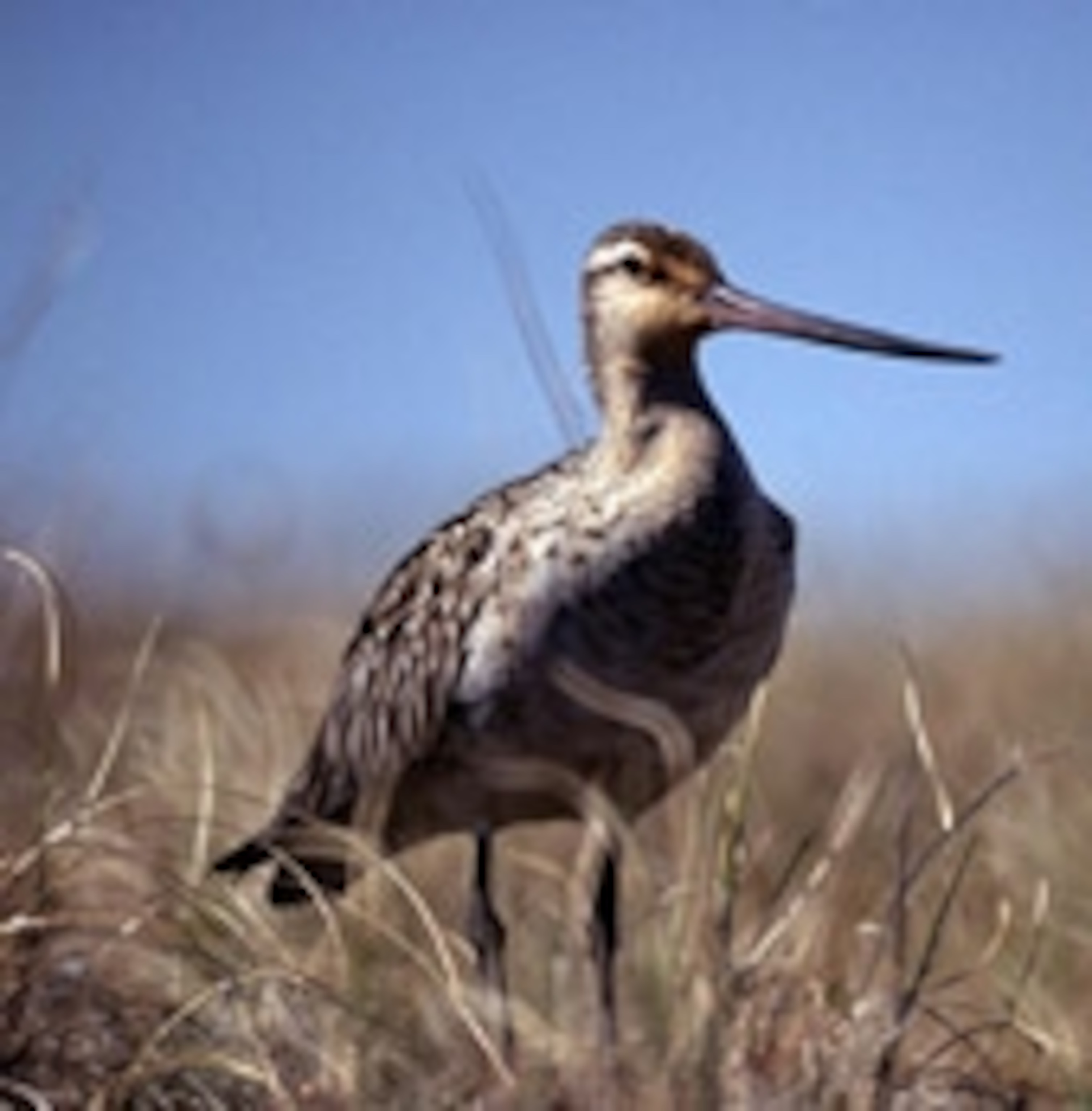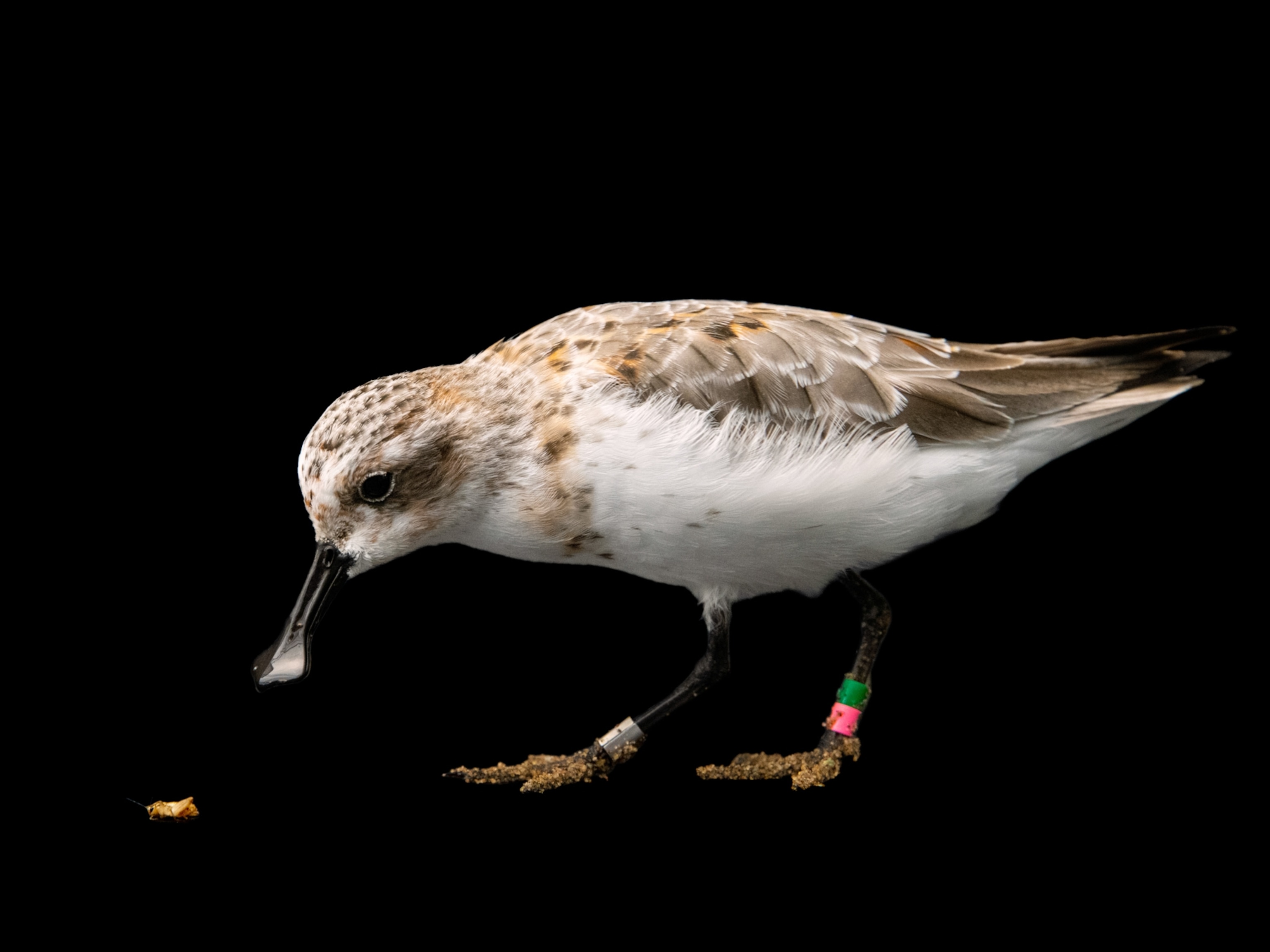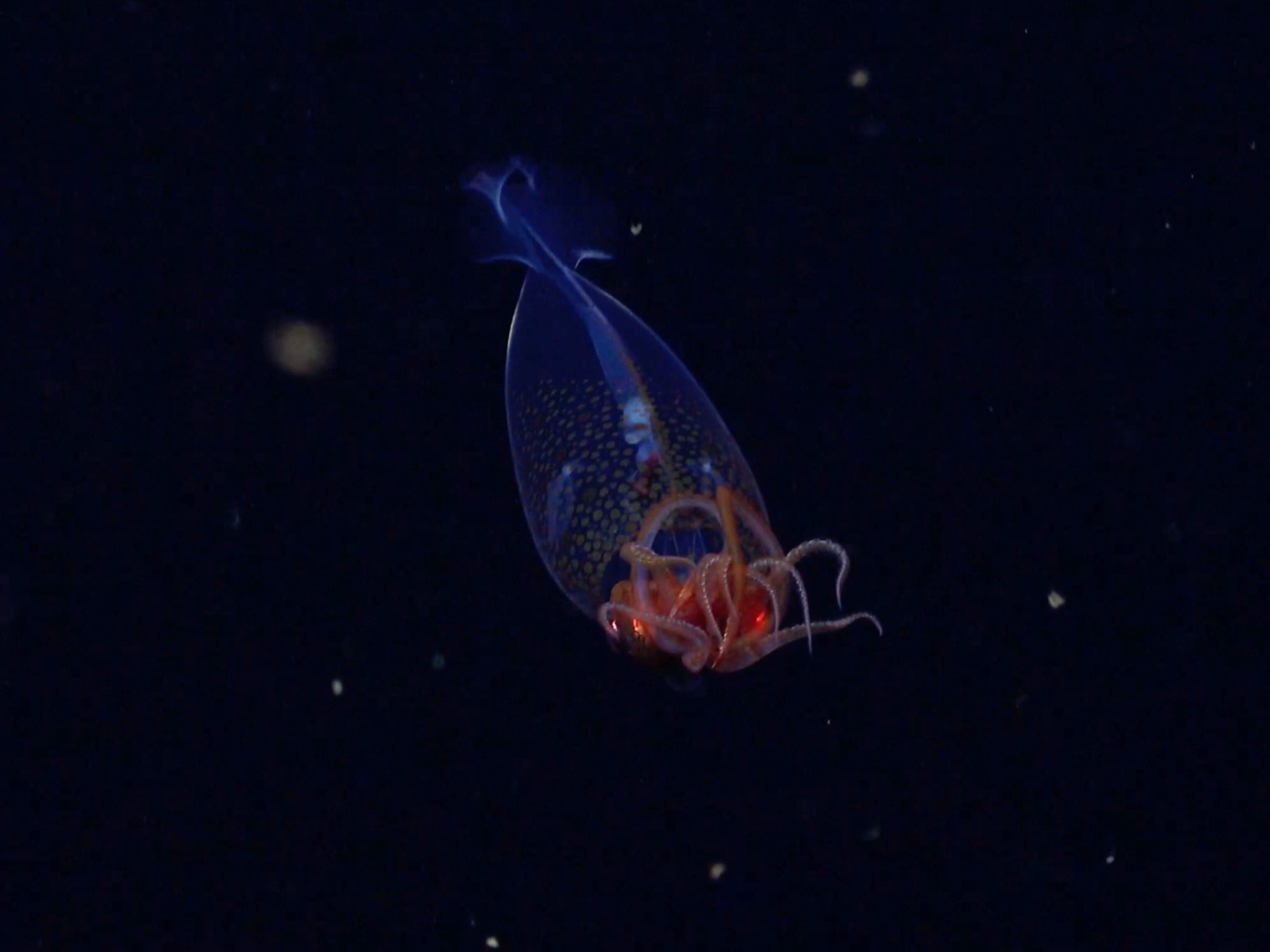A female shorebird was recently found to have flown 7,145 miles (11,500 kilometers) nonstop from Alaska to New Zealand—without taking a break for food or drink.
It's the longest nonstop bird migration ever measured, according to biologists who tracked the flight using satellite tags.
The bird, a wader called a bar-tailed godwit, completed the journey in nine days.
In addition to demonstrating the bird's surprising endurance, the trek confirms that godwits make the southbound trip of their annual migration directly across the vast Pacific rather than along the East Asian coast, scientists said.
"This shows how incredible and extreme birds can be," said Phil Battley of New Zealand's Massey University, who took part in the study.
"The prospect of a bird flying all the way across the Pacific was so much further than what we thought possible, it seemed ludicrous," he said.
"Like Running for a Week"
The long haul was documented during a study of godwit migration conducted by the U.S. Geological Survey and PRBO Conservation Science, a California-based nonprofit dedicated to bird research.
Some 70,000 godwits make the epic journey from their northern summer breeding grounds in Alaska down to New Zealand each September, before flying all the way back the following March.
To study this annual trek north, Battley and his colleagues fitted satellite transmitters to 16 godwits at two locations in New Zealand last summer.
Battley was amazed, he said, to find that one of the birds, dubbed E7, flew some 6,340 miles (10,200 kilometers) directly to a wetland on the North Korea-China border (see map).
After feeding and resting there, she continued another 3,000 miles (5,000 kilometers) to Alaska.






